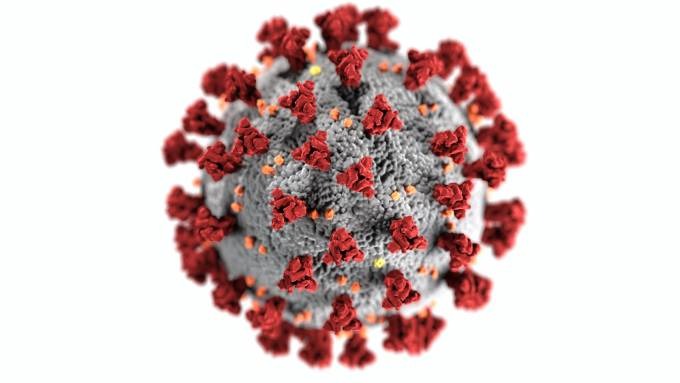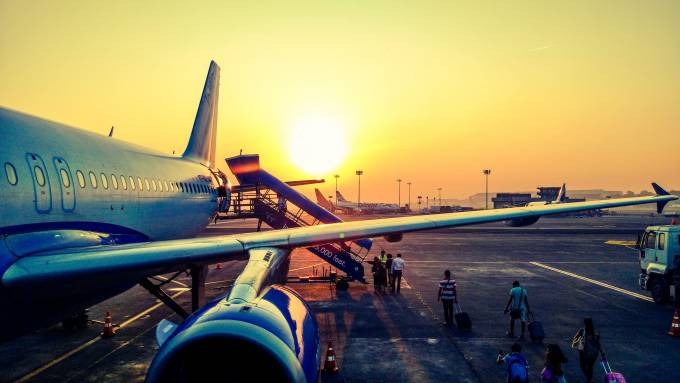COVID-19 And Air Travel: The Effect And Future
You're wearing PPE (Personal Protective Equipment) kit, someone walks up to you to monitor your temperature and you're then asked to walk across the aisle to be seated distant from a co-passenger. Welcome to the future of air travel. Traveling by air is not going to be as it was probably a few months back. The onset of COVID-19 – biggest global disruption in centuries – has changed the way we will travel in more aspects than one.
As the pandemic continues to evolve globally, airlines worldwide are trying to adjust their routine and policies to allow more flexibility to passengers. Many airlines – major part of the fleet of most – still remain grounded and safety of the passengers and crew remains top priority for airlines and airport authorities as travel snails to some sort of normalcy and economies rebound.
In this unprecedented time for air travel, the world's airlines have been hit by the drastic fall in passengers due to the strict coronavirus travel restrictions. After severe stay at home rules, countries are now steadily easing parameters. But if you are planning to board a flight anytime soon, you need to plan wisely – adhere to cautions – and check with your local authority before traveling.
The present scenario
World Health Organization Director-General in his most recent briefing on COVID-19 said, "the (coronavirus) outbreak is accelerating" at an alarming pace and "we have clearly not reached the peak of the pandemic." "Only road out of the pandemic " he said is "national unity and global solidarity." On the global platform, countries have come together to ensure there is no to and fro of air travel – restricting passengers from unwanted travel – to ensure spread of the novel coronavirus is bunged from crossing borders.
A disease such as COVID-19 poses risk to travelers because it can transmit between humans. Keeping this in mind, "COVID-compliant operational procedures" are in place for airlines and airports. Since July 1, nations are gradually lifting bans after months of lockdown but most either still prefer to keep their borders closed for air travel or remain closed for non-residents and non-essential travelers.

Countries permitting international travel have their own set of protocols – quarantine norms – or are only allowing tourists from countries that have less or decreasing coronavirus cases. Certain European countries have opened their international terminals for over 15 countries including New Zealand and South Korea but remain hesitant in permitting travelers from the United States and India, where everyday cases are still on an exponential rise. The United Kingdom is accepting travelers from over 50 countries with quarantine restrictions for passengers from "countries where the virus is sadly not under control," Prime Minister Boris Johnson said.
Many nations across Africa and South America remain in lockdown, while U.S. border closures have not been lifted. Domestic flights in some countries such as South Africa have resumed while international flying remains paralyzed so as to avoid importing new cases of the virus.
Considering the rising cases in almost all U.S. states and varying travel restrictions both within and outside the country, the nation's health protection agency – Center for Disease Control and Prevention (CDC) warns travelers from boarding flights – even domestic flights. Traveling "increases the chance of getting and spreading COVID-19" CDC claims.
Changing air time
The aviation sector, already struggling with grounded fleet, halted working capital, and sizable reduction in workforce, faces an uphill task to see planes take to the air once again. The industry is up against a wall of restrictions that mandates – varying from country to airport – essentials airlines must follow to ensure the wellbeing of passengers and crew.
Social distancing, WHO notes, remains the most vital defense against the highly contagious coronavirus. This on planes means, airlines have to cordon off seats or limit the number of passengers in order to adhere to physical distancing practices.
Such measures seem easy to follow but may not deem flying very profitable for financially stretched airlines. IATA (International Air Transport Association) reckons, with physical distancing norms in place, airlines can carry a maximum of slightly above 60-percent of their capacity; "for airlines to be profitable" they must fly at least "77-percent" passengers.
Flying around below the profit margin makes very little fiscal sense. How long will the airlines pull off staying air bound in such a scenario is anyone's guess at the moment. An impulsive and exponential hike in airfares thus remains on the cards. Aviation experts believe almost eight to nine percent hike is likely. Albeit, it may not happen instantly and airlines may be compelled to consider it only if the passenger inflow does not increase, government rules aren't loosened, and the virus vaccine is not developed sooner than later.

Most airlines have for now given into the idea of cordoning off the middle row seats to create sufficient distance between two passengers and follow social distancing practices. In the limits of the airplane, it may still be difficult for the crew to maintain that 6 feet of physical distance between passengers.
This is probably why airlines are requiring travelers to wear masks – some flyers are even providing face shields to passengers onboard. Seeking the opportunity, some airlines are mulling an alternate path. They permit booking as normal but add an option; passengers can pay extra to increase the distance from co-passengers.
Aside from onboard changes, there are many alterations in pre and post flight norms travelers need to be abreast with. Airlines and airports around the world have mandated wearing face masks for passengers at all times – on airport and in-flight. Some authorities across the globe are considering self-drop-off for baggage, self-check-ins, and alteration is document verification to minimize physical contact at the airports. Until technology is beefed up at the airports – enforced social distancing norms will mean longer queues at check-in and security points.
Most outbound passengers from countries with a high number of COVID cases, such as the United States, face health screening before boarding and at arrival in destination country, which can be up to 14 days of mandatory quarantine in state-organized facilities for all travelers – symptomatic or not. All passengers landing from a foreign country in South Korea must undergo coronavirus test and download a mobile app, which should be active at all times to keep track of the movement and health of the passenger.
Social distancing and quarantine aren't the only new normal for the aviation sector. Travelers in some countries are required to present evidence to support they're negative to coronavirus before being permitted to board an international flight. In Kenya, passengers scheduled on a flight must get their COVID-19 test done within "72 hours before scheduled departure" and carry their negative report to present at the time of check-in.
To further abide by social distancing norms, airlines are also curbing in-flight food and beverage service – in some cases even the pillows and magazines – to limit contact between crew and passengers. Next time you're on a flight, the crew member in PPE kit and face covered with a shield may not walk up the aisle with a trolley full of meal or a complimentary drink on your call. Airlines want minimum close physical contact between passengers and crew to ensure continued health and wellbeing of all.
